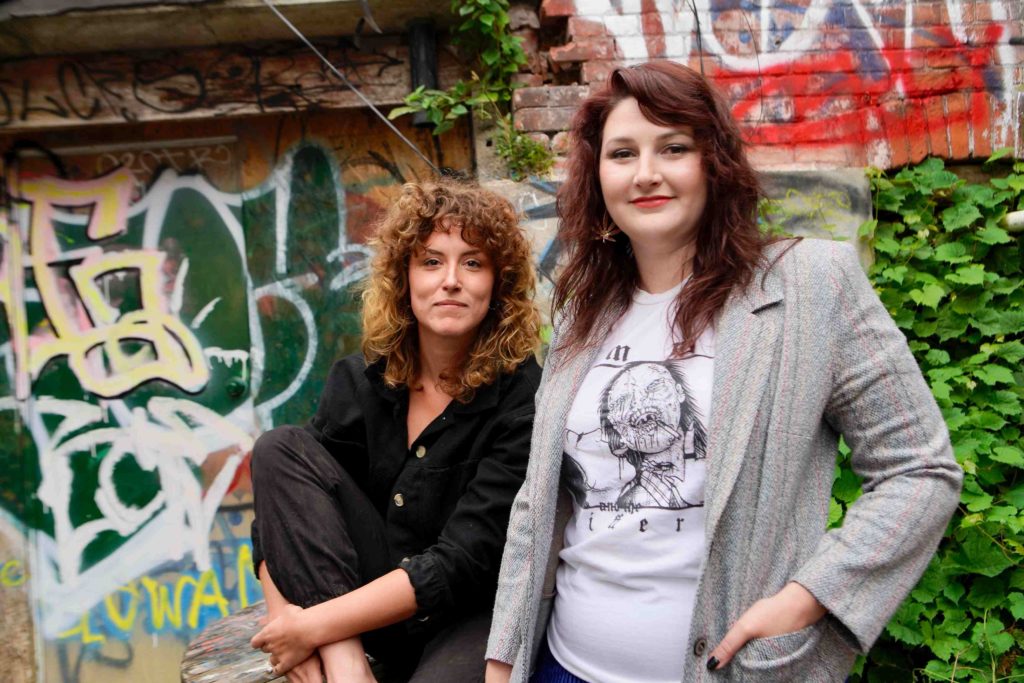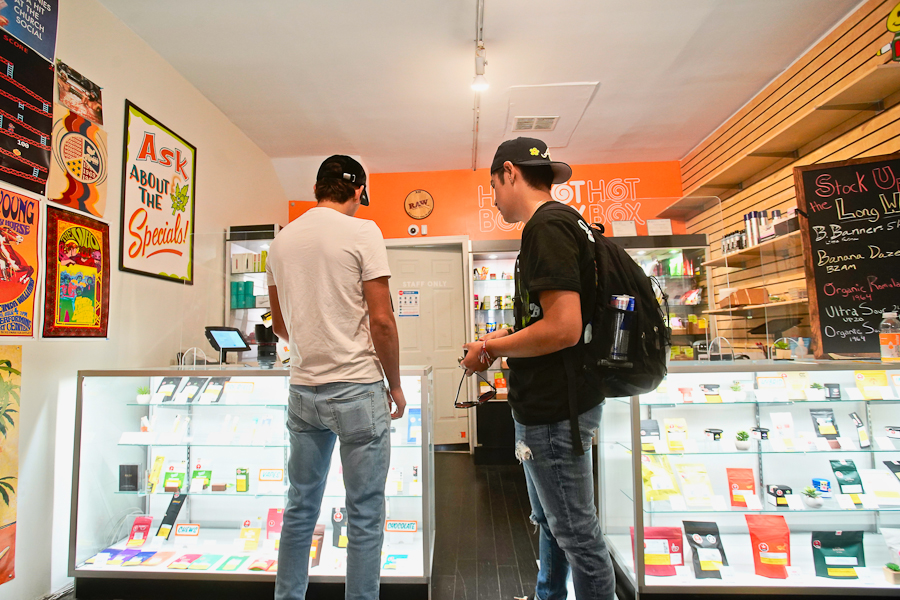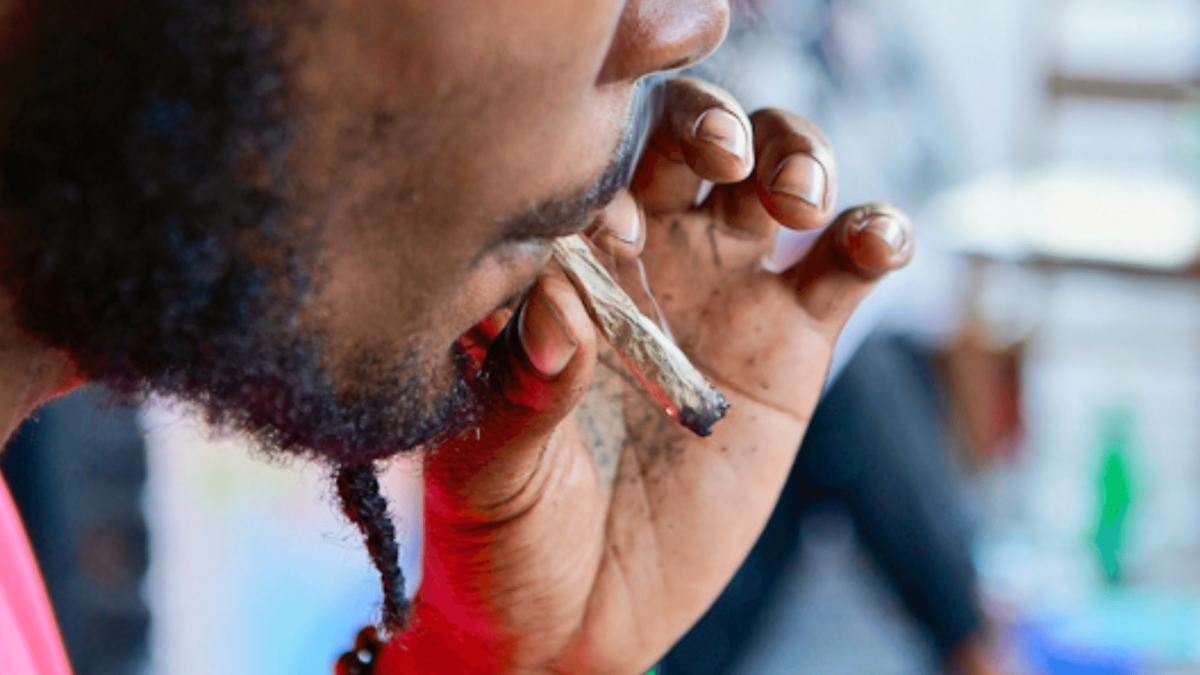This feature was a collaborative project between The Green Line, The Hoser and rabble.ca. Please RSVP to attend our labour trivia night and Story Circle, here.
The plant with many names is a medicine, a recreational drug and an investment opportunity. It’s also an agricultural product that needs growers, transporters, sellers and warehouse workers. But unlike, say, the auto, construction and textiles industries, cannabis isn’t synonymous with labour.
That’s changing post-legalization, though, as the cannabis industry is illuminating the movement of capital and labour in ways that are harder to see with established industries. Not only does it impact legal and illegal economies at all levels, from neighbourhood to national, cannabis touches on issues of Indigenous sovereignty, the gig economy and financialization.
But at the end of the day, it’s really all about labour.
Cannabis is a labour issue
Dan Darrah, a Toronto-based journalist whose work often explores cannabis and labour issues, says labour publications generally haven’t paid attention to the cannabis industry, and that cannabis publications have been focused on topics other than labour.
“I think a lot of attention is paid to the high-level industry turbulence, mostly in the corporate sector, which doesn’t surprise me. It’s wild stuff — in a short period of time, we’ve witnessed a speed-run of casino capitalism, buoyed by breathtaking investor optimism and big-promising CEOs,” Darrah, 28, explains.
Meanwhile, he says industry workers are overlooked. The current financialized cannabis industry makes it difficult for what industry folks call the “legacy market” to exist. It’s a market made up of small, independent shops still operating outside the law in the grey economy, including the highly successful Indigenous cannabis market.
As a result, Darrah says, weed workers have suffered layoffs, as greenhouses and retail stores shuttered their doors. They’ve also been thrust into new workplaces with inexperienced management or shopfloors that fail to meet basic health and safety requirements. “These are some of the stories I’ve heard from workers I’ve spoken to. Some good journalism has shed light on these struggles, but I think most media likes to focus on the Succession-style developments,” he adds.

What’s more, agricultural workers are excluded from the Ontario Labour Relations Act (OLRA); this includes cannabis production workers, as the plant is considered an agricultural product even though it’s grown in indoor facilities that resemble factories and labs.
Kat Quinn, a labour organizer with United Weed Workers and a former budtender, believes that failing to consider the people behind the product ultimately harms both.
“I don’t think people think where their grow comes from is the territory of labour. When you devalue the work people do, you devalue the product,” she explains. “People want [their weed] not to have mould, but you also want the person who grew it to be paid a fair wage, not be exposed to toxic chemicals and have generally good working conditions.”
Up in smoke

In my neighbourhood of Kensington Market, long-time cannabis lounges like Roach-O-Rama and HotBox long defied the law by openly allowing cannabis-smoking inside. Not only did these places enable customers to buy cannabis, they also allowed them to smoke if they bought a certain amount of munchies or milkshakes per hour. Then in the pre-legalization period before 2018, there were quasi-legal stores visibly operating everywhere in Toronto, outbidding other types of storefronts for locations. So, they were vulnerable to raids by both the Toronto Police Service and organized crime.
Local budtenders tell me they took major risks to work in a grey-economy area, but did so because they were getting opportunities in an emerging industry and also felt connected to a broader social justice movement. The legalization process led to a proliferation of the provincially owned Ontario Cannabis Store (OSC) shops in Kensington Market, but also controversy.
Former Toronto police chief Julian Fantino — who once compared legalizing weed to legalizing murder — was the chairman of Aleafia Health Inc. in 2018 when it acquired a 9.9 per cent interest in One Plant Cannabis Dispensary, a prominent cannabis company that currently has 30 locations across Ontario. One Plant’s Kensington Market location on Augusta Avenue replaced a longtime grocery store that was a community institution and a connection to Kensington’s history as a predominantly Jewish area. Fantino is no longer involved with One Plant as of 2020, but many locals in the neighbourhood still refer to it as the “cop shop.”
Sam Eric, a 32-year-old community organizer in Kensington Market and self-described “longtime pothead,” says those who operated in the legacy market are being punished while establishment figures like traditional capitalists profit.
“Who is going to be allowed into the legal market? Indigenous folks? People with criminal records for dealing or smoking weed? You have Fantino opening a pot shop — what everyone in the neighbourhood calls a cop shop,” he says. “They say he pulled back financially after the neighbourhood outcry in Kensington, but now you have them flying an Indigenous flag and having Black artists and pretending to be woke. But everyone knows.”
Eric adds that the sovereign, Indigenous-owned Mississauga of the Credit Medicine Wheel at College and Spadina is one ethical weed option in the neighbourhood, along with 1tonamara near Spadina and Queen, Roach-O-Rama close to Dundas and Spadina, as well as some low-key, legacy Black-owned shops. Roach-O-Rama is now an OSC shop, but remains historically important in the legalization battle, and is still fighting for pot lounges.
“Everyone’s seen what’s unfolded in the war on poverty via the war on drugs; it goes back decades with racist undertones and exploitation of working people. The beneficiaries [of legalization] have been straight-edge business people without criminal records,” Eric explains. “In 2018, labour unions and politicians were trying to get a piece of the pie, but where is the restitution? In some U.S. states, they did it better. But here, it’s just better for capital.”
The spectre of big business and consolidation hangs over the cannabis industry in other ways. Value Buds is a major player trying to muscle in on Ontario’s cannabis market. It’s owned by Alcanna Inc., the major beneficiary of the privatization of Alberta’s provincial liquor system, which led to a massive loss of union jobs in that province, according to Eric. He adds that opportunities to unionize the cannabis industry at the start of legalization were lost due to union infighting.
Eric, who also works for the provincially owned Liquor Control Board of Ontario (LCBO) and is unionized with the Ontario Public Service Employees Union (OPSEU) Local 5110, says he was there during the infighting between OPSEU and Unifor, Canada’s largest private sector union. He says that both unions, run by their then-leaders Warren (Smokey) Thomas and Jerry Dias, respectively, went head-to-head over the rights to unionize the cannabis industry. There was some serious discussion of possibly selling cannabis in LCBO stores. But the infighting was never resolved pre-legalization, which contributed to the failure to create a unionized industry, according to Eric. Progressive Conservative (PC) Party leader and now Ontario Premier Doug Ford’s subsequent supervision of the Ontario legalization process was also a major contributing factor.
In 2017, OPSEU “got a letter in our collective agreement under [former Ontario Liberal Party leader and premier] Kathleen Wynne that [said] if the government rolled out a legalization scheme, it will be unionized under OPSEU,” Eric says, adding that Unifor also had cannabis-unionization plans. “It seemed kind of like [both unions] were trying to get in on this cash cow, and it seemed like they were really cheering on the OCS for cracking down and shutting down people’s small independent shops.”
Eric recalls speaking at an LCBO worker’s union meeting, and pointing out that liquor store workers were facing their own serious problems, including the casualization of labour — with 70 to 80 per cent of their workers classified as “casual relief” — while union leaders were chasing the cannabis market. He adds that OCS warehouses did ultimately unionize with OPSEU.
Unions have been “fumbling” since the legalization process started, according to Eric who emphasizes the need for a rank-and-file strategy where “scrappy little outfits” are supported by big labour. “Unions need to understand that it’s not about immediate returns; you aren’t going to see fast returns in terms of dues payment or shops unionized. Labour unions have to be in for the long haul,” he explains.
Scrappy little outfits
United Weed Workers (UWW) is that scrappy little outfit. I first encountered UWW on Instagram, which is fitting for a young, grassroots campaign that uses a combination of on-the-ground engagement, social media and old-school telephone hotlines to organize weed workers. They mostly operate in retail, but some are in growing and trimming.

UWW is an independent team, but it’s also been working closely with unions such as United Food and Commercial Workers (UFCW) to organize shops. UWW started out of the organizing momentum that emerged from the first unionized weed shop, Canna Cabana on Barton Street in Hamilton (UFCW 175), in December 2020. Founders Alex Pollard met Kat Quinn, who had been part of a unionization drive at Tokyo Smoke, and together they formed UWW.
According to UWW’s ongoing survey of weed workers, over 80 per cent of respondents said they were not earning a living wage or being fairly compensated for their time and labour, and that there are serious issues with break times, vacation, scheduling, wage theft, and paid and unpaid sick days. Beyond these issues, Pollard, 34, says, “We’ve seen every type of discrimination you can imagine.”
Other problems cited in the survey include anti-trans discrimination, racism, pregnant workers getting fired, and businesses trying to enforce non-compete clauses for retail workers who make near minimum wage, telling them they can’t work at other retail shops in the area.
“As the industry goes from legacy — what some people call the grey or black market — to legal, a lot of people don’t know that they have rights at work. We tell them you do get a break after 10 hours. You are allowed to ask for a chair to sit down at work,” Pollard says, adding that the shop she worked at had no fire extinguisher. “There are a lot of young workers, and the industry preys on people who don’t know any better.”
“The young generation is equal parts riled up and also terrified because the stakes have never been higher.”
The UWW model involves a small grassroots campaign working with a big union like the UFCW to consolidate gains. Currently, there are nine open union drives in Ontario connected to UWW’S grassroots campaigns that are in different stages of the unionization process with UCFW. For example, four Tokyo Smoke shops are unionized, but don’t have contracts yet.
This approach is similar to the one used by Foodsters United, which later became Gig Workers United. Smaller unions can be nimble and responsive to new industries in ways that can help larger trade unions. Meanwhile, consolidating the gains of shop-floor worker power through a recognized union with lawyers is helpful for small shops with high turnover that might not be able to sustain grassroots enthusiasm. “We are so grassroots, the goal is to grow into a larger strategy. There is a shared struggle,” Quinn, 33, explains.
From 2004 to the early 2010s, for example, the Industrial Workers of the World (IWW)-led grassroots campaigns for the unionization of Starbucks workers in North America were not able to sustain momentum or keep stores unionized. There were many factors that contributed to this — including union-busting — but the grassroots-only, no-contract strategy made it difficult to support workers over the long haul. Recently, a new wave of Starbucks unionization with Workers United has been making progress unionizing stores under a different model in the U.S.. Similarly, Starbucks stores in Canada are organizing with help from United Steelworkers.
Cannabis is agriculture

Labour rights are even more precarious for migrant workers in the cannabis industry.
Like other agricultural products, cannabis farming is heavily dependent on the exploitation of migrant workers. In most Canadian provinces, agricultural workers are forbidden to organize in unions — a state of affairs that has been condemned by the International Labour Organization. For migrant workers, this situation is exacerbated by having insecure immigration status and closed work permits that tie them to specific employers. Many of these workers come from foreign countries, accounting for 18 per cent of Canada’s agricultural workforce. Nearly 46 per cent of all temporary migrant farmworkers in Canada were working in Ontario in 2020.
“Dozens of cannabis farms have been raided, and migrant farmworkers in them have lost their jobs. Their housing has been taken away, and many are left without permits despite coming to work in Canada through so-called legal methods,” says Syed Hussan, executive director of Migrant Workers Alliance for Change. “Whether it’s chicken-catching or cherries or cannabis, bad employers will exploit them as long as the federal government denies them permanent resident status.”
Because migrant workers are often tied to employment contracts, they’re prevented from switching to other employers or advocating for themselves, according to Hussan. He adds that these workers can be deported after farms are raided by authorities.
Santiago Escobar, a national representative for UFCW, says these issues are further compounded because some cannabis operations exist outside of legal frameworks. Indeed, some migrant workers are told they’re employed by legal farms, only to later find the farms raided.
Justicia for Migrant Workers (J4MW), a volunteer-run collective, has been working with Canadian and migrant workers in southwestern Ontario who were fired without termination pay when the cannabis facility PharmHouse closed. J4MW says it helped get termination pay for these workers, and in the process, documented many other labour rights issues at the facility. For example, workers were exposed to UV lights, which can cause medical problems for humans, but are not well-regulated under existing worker safety legislation. Also, workers were illegally deducted wages for substandard housing in congregate bunk houses, which allowed for COVID-19 outbreaks.
“The cannabis industry is simply a get-rich scheme whose massive profits are being generated off the blood, sweat and sacrifices of Black and brown labour. Wealth isn’t being generated by any ingenuity — it’s simply theft,” says Chris Ramsaroop, 48, a University of Toronto professor and an organizer with J4MW who’s spent the last 21 years organizing with migrant agricultural workers. “To tell us that CEOs such as [Tilray CEO] Irwin Simon can earn a cash bonus of $13.2 million [USD] in 2021 while cannabis greenhouse workers earn minimum wage is obscene and heinous.”
The Indigenous market
Beyond the legacy and legal markets, there’s also the Indigenous cannabis market. Sovereignty cannabis represents the lion’s share of the Indigenous market, as reserves are home to many cannabis shops and grow operations. But the market’s position outside of the official system makes it difficult to quantify.
Indigenous growers and sellers were the first to have storefronts in Ontario, and to market and sell weed openly. But they say they were left out of the legalization process, and that they’re now facing opposition from the government, as well as competition from well-funded companies. Although some Indigenous cannabis brands are reaching the legal OCS market, many of these operations run on a sovereignty basis.
Kanenhariyo (whose English name is Seth LeFort), a Tyendinaga Mohawk and entrepreneur who frequently comments publicly on the Indigenous cannabis industry, says the cannabis legalization process was deeply flawed. “OCS is directly competing with [the] Indigenous cannabis industry without [the] consent of Indigenous people on our own lands that Ontario doesn’t have a right to,” he says, adding that the provincial government’s refusal to include Indigenous cannabis enterprises in the process amounted to dispossession.
Indigenous cannabis entrepreneurs were not consulted or invited to take part in Ontario’s legalization process, which first granted licences under a lottery system with no provision for existing Indigenous enterprises. Even today, according to Kanenhariyo, many of these entrepreneurs have a difficult time opening bank accounts and getting loans, often experiencing trouble with the Canada Revenue Agency (CRA).
“None of us can open business accounts. Many, if not most of us, have been red-flagged, and can’t even open unrelated bank accounts, making it impossible to operate delivery services,” he explains. “Basically, treating us as criminals but without charging us out of fear they will lose the precedents [if this issue actually goes to court].”
Indigenous people are disproportionately criminalized for cannabis-related drug offences in Canada, according to a 2021 study titled “Race, cannabis and the Canadian war on drugs: An examination of cannabis arrest data by race in five cities.” In the study, authors Akwasi Owusu-Bempah and Alex Luscombe reveal that there are “clear disparities” in cannabis possession arrests by race across Canada. Looking at Ottawa, the only Ontario city analyzed, Indigenous people were arrested at a rate of 20.8 per 10,000 in 2015, whereas white people were arrested at a rate of 5.4 per 10,000. Indigenous people were also overrepresented in arrests compared to their representation in the general population (disproportionality score of 2.7), whereas white people were underrepresented (disproportionality score of 0.7).
What’s more, unlike in some U.S. states, Canada’s approach to legalization makes no provision for mass pardon of cannabis offenders who continue to carry criminal records and in many cases are forbidden from working in the legal industry. Cannabis legalization in California, New York, Washington state and other jurisdictions includes specific provisions for erasing the criminal records of people with minor cannabis convictions, as well as for social equity cannabis licences for Black and Latinx cannabis entrepreneurs.
Although Indigenous people paid a heavy price for working in the cannabis industry pre-legalization, they aren’t reaping the benefits of the current legal market. Indeed, a 2020 report from the University of Toronto’s Centre on Drug Policy Evaluation found that only 2 per cent of cannabis industry leaders are Indigenous. Meanwhile, it adds, 84 per cent of leaders are white.
Sovereignty cannabis
To much of settler society, Indigenous cannabis looks like crime or a grey economy. Embracing the perspectives that land theft is criminal, cannabis is medicine and Indigenous people have the right to operate outside of our colonial legal system, is to challenge the foundations of Canadian society.
Sovereignty cannabis shops have popped up like mushrooms on reserves across Canada, especially those in proximity to settler-dominant cities. Due to high demand, these shops provide employment and income to both Indigenous and non-Indigenous workers across Ontario, increasingly including sovereignty stores in urban centres.
Rose, a clerk at the Big Greens convenience store in Tyendinaga Mohawk Territory on Highway 49, east of Belleville, has lived on the reserve for a decade. She says her job ensures she can care for her family. “Many people come here with every kind of pain or problem. [I love it] when I can recommend something to someone with cancer treatment, and they come back and ask for it again,” says Rose, who declined to provide her last name due to concerns over her work in the grey economy.
The first sovereignty cannabis shops in Canada opened in Tyendinaga. Decades ago, it was also the first to sell sovereignty gasoline and sovereignty tobacco, economic projects that were imitated in reserves across Canada.

Many Indigenous cannabis entrepreneurs tell me they have the sovereign right to cannabis operations on their lands. Similar arguments were made about tobacco, an Indigenous agricultural innovation that has important ceremonial uses, because the Canadian tobacco market is effectively an oligopoly between Imperial Tobacco Canada, Rothmans, Benson & Hedges, and JTI-MacDonald. They say the Indigenous tobacco industry was squeezed out and criminalized in Canada, despite extensive operations involving agricultural growing, factories on reserves, tobacco shops and distribution networks.
For its part, Tyendinaga is Mohawk territory, which belongs to the Haudenosaunee Confederacy (also known as Six Nations); it comprises six members of a confederacy of Indigenous nations: Seneca, Cayuga, Oneida, Onondaga, Tuscarora and Mohawk. The confederacy was established between roughly 350 to 600 years ago, predating Canada’s founding in 1867. Indeed, when the Haudenosaunee applied to the League of Nations, the precursor to the United Nations, it had more qualifications as an independent nation than Canada did. What’s more, Great Britain, France and Canada previously signed now-broken treaties stating that the Haudenosaunee are an independent nation and have rights to their own land. They include “The Great Peace of Montreal,” “Nafan Treaty,” “Two Row Wampum,” “Silver Covenant Chain Treaties,” “Treaty of Albany 1701” and the “Haldimand Tract.”
Kanenhariyo, the Tyendinaga Mohawk and public advocate for the Indigenous cannabis industry, says he’s concerned about the industry’s long-term sustainability under steep competition from OCS stores and corporations with access to financial capital. “Ontario weed stores are putting us out of business, along with the government-licensed growers,” he explains, predicting that there will be less than 5 per cent of Indigenous shops still open on reserve within the next year.
“The deeply flawed legalization process trampled on the already existing Indigenous pot industry, [which was] not invited to the table to help shape the legalization process despite having built the market for the project, and Ontario being Indigenous land both by traditional territory and much of it by treaties that have been ignored and occupied.”
Pipe dreams

The third and final Trailer Park Boys movie in 2014 featured beloved protagonist Ricky giving the title speech “Don’t Legalize it” in front of Canada’s Parliament Buildings. He argued against cannabis legalization because of all the hardworking small-time dealers that would be put out of business. But jokes aside, they did legalize it — and since then, we’ve been seeing cannabis culture change beyond recognition in the form of waves of new businesses altering the face of our communities. First was the grey economy popping up and being shut down. Then came the plethora of small, independent legal stories. And now, market consolidation by big corporate players.
For example, my neighbourhood of Kensington Market in many ways made its reputation on the counterculture embodied by weed. But it now struggles with the effects of gentrification, as cannabis shops proliferate, and both commercial and residential rents skyrocket.
We can trace the cannabis commodity chain from the agricultural workers who grow and trim the product, to the budtenders who make low wages at dispensaries, to the Indigenous cannabis industry that’s witnessing yet another economic opportunity closed off by legislation. We witness the failure of the institutional labour movement to organize the cannabis industry from the get-go, as well as scrappy little outfits unionizing at the grassroots level, worker by worker.
Cannabis has become yet another commodity. But we shouldn’t forget that it is made by human labour — and labour has power.



